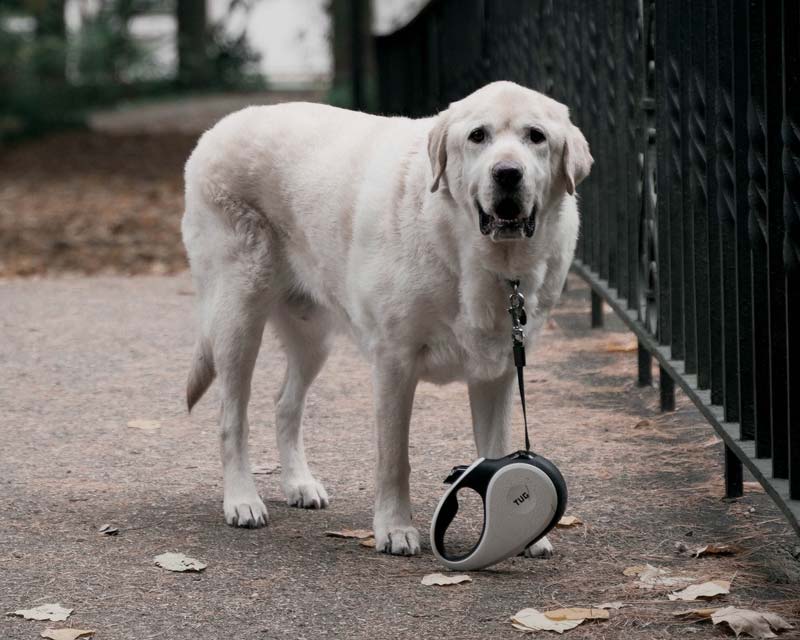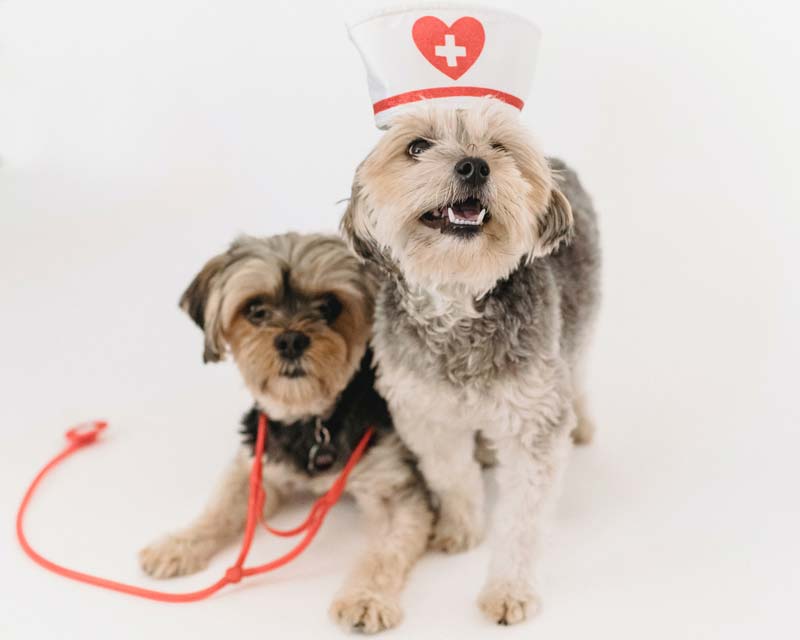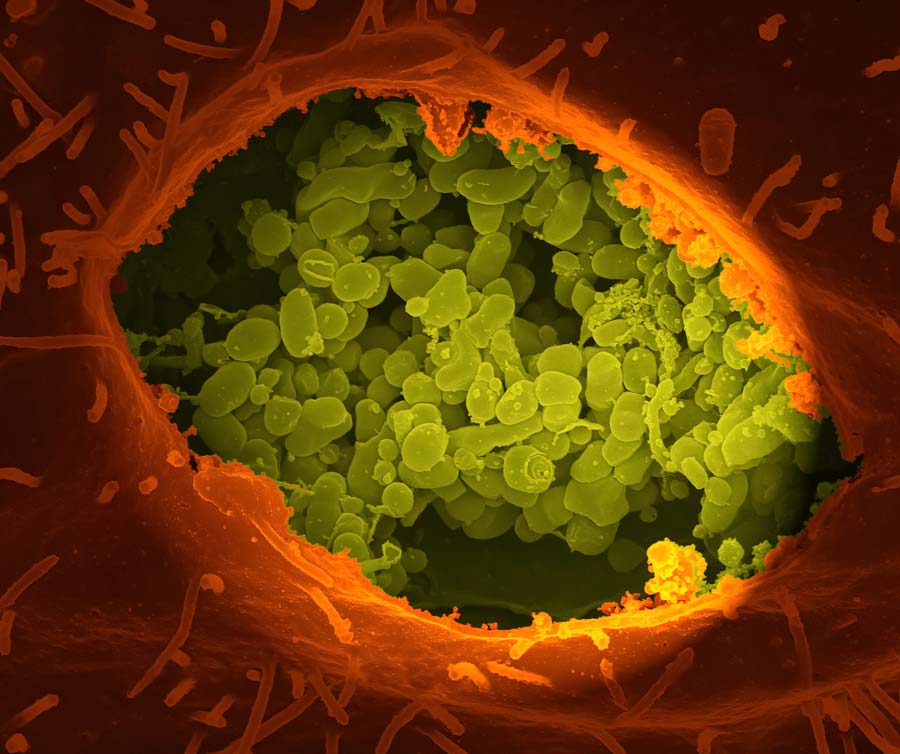by Rebecca Henderson and Andy Clark | September 22, 2020
This post comes from the blog As We Serve With Significance by Rebecca Henderson, which Dr. Andy Clark was invited to write for. What follows is Andy's contribution. Here is the full article with an introduction by Rebecca.
Lavengel Began with a Human Friend with Shingles
Most experiments start with asking a research question, developing a hypothesis, and writing specific research aims and objectives. This one started with a desire to help a friend who had recurring shingles outbreaks. He is one of those rare individuals who can have 3 to 4 shingles outbreaks each year.
One day, he told me that if he put lavender oil on the tip of his finger and touched it to the shingles lesion, it would stop the pain for 5 to 10 minutes. I wondered if I could develop a formulation that would provide the nutrients necessary for wound healing (vitamin C and zinc), while quenching free radicals (vitamins C and E) and easing the pain through the addition of lavender oil.
Typical laboratory problems emerged such as what forms of zinc, vitamin C, and vitamin E did I need to use to give me a stable topical gel that would emulsify and hold lavender oil in suspension?
Lavengel is Formed and Hampers the Herpes Virus
After numerous iterations, we developed Lavengel®, a nutrient-rich topical gel comprised of vitamin E-TPGS, ascorbyl palmitate, zinc aspartate, lavender oil, and deionized distilled water.
When my friend tried the new gel, he found that it helped speed the recovery of the lesion, and it reduced pain for 8 to 12 hours! Numerous friends and individuals with shingles have since tried Lavengel® and found the same results that my friend saw. So we thought, “Maybe we have a commercial product?”
Because shingles outbreaks involve the Herpes zoster virus, we wondered if Lavengel® would help with cold sores (also caused by the herpes virus). The answer was YES! Lavengel® halved the time for the cold sore lesion to heal and reduced the associated pain!
Lavengel vs Other Skin Microbes
Since we were applying Lavengel® to the skin, we wanted to know how it interacted with the bacteria that commonly reside there. One of the great things about working at a university is the opportunity to talk to experts from other disciplines.
I asked Dr. Ranjan Chakraborty and Dr. Sean Fox (Department of Health Sciences, College of Public Health, ETSU) how we could design an experiment to mimic whether a topical application of Lavengel® would impact common skin microbes. I wanted to make sure that we were not enhancing the growth of pathogenic bacteria (that would not be a good thing!!!).
What we found was unexpected. Not only did Lavengel® not promote the growth of pathogens, it successfully inhibited the growth of bacteria known to populate burns and wounds: Staphylococcus aureus (S. aureus), Klebsiella pneumoniae, Pseudomonas aeruginosa.
Lavengel Inhibits Staph, MRSA + Biofilms
On top of that, they were not only inhibited in the planktonic (single cell phase), but also in the unattached and attached biofilm phases! Bacteria that create biofilms are rather difficult to treat. Basically, the bacteria build a colony on top of their deceased comrades, creating a barrier to antibiotics and other treatment protocols.
The ability of Lavengel® to treat these biofilms was a significant finding. We then wanted to find out if Lavengel® would be able to inhibit the growth of methicillin-resistant S. aureus (MRSA), a tough-to-treat bacterial infection that demonstrates a resistance to a number of antibiotics. It turns out that Lavengel® is very effective in inhibiting the growth of MRSA and other methicillin-resistant Staphylococcus organisms (e.g. S. pseudintermedius in dogs)!
Finding Out How Lavengel Works
We used a technique called PCR (Polymerase Chain Reaction) to determine how Lavengel was inhibiting the growth of S. aureus. Graduate student Tasha Nelson has been spearheading these experiments where S. aureus bacteria are grown in culture with either Lavengel® or Mupirocin® (a topical antibiotic for Staphylococcus infections).
With the inclusion of these agents, bacteria begin to have trouble surviving, and they express mRNA. “mRNA” stands for “messenger RNA,” which is a copy of a gene (section of DNA) that is used to produce a specific protein. By expressing these mRNA molecules, the bacteria are telling us what is bothering them and how they want to fix it. That is why I call these experiments the “Screamin’ Genes” experiments.
What we have found to date is that Lavengel® is creating a problem with the bacteria’s cell membrane — essentially drilling holes in the membrane and allowing antioxidants to seep in and kill the bacteria. On the other hand, bacteria exposed to Mupirocin® state that they are having problems with transcription and translation (the bacteria’s ability to reproduce), thereby inhibiting bacterial growth.
By understanding Lavengel’s mechanism of action (how it works), we can try to find ways to “tweak” the product to make it more effective. These experiments would not have been possible without the dedication of Dr. Fox and a plethora of undergraduate and graduate students who wanted to get involved in research studies. I am truly grateful.
Lavengel vs Burns and Chronic Ischemic Wounds
Next, we wanted to know if Lavengel® assisted in the healing of burns and chronic ischemic (lack of blood flow) wounds. While we already knew that it was effective in inhibiting the growth of pathogenic bacteria commonly found in burns through our work with Dr. Fox, we needed to go to an animal model to test our hypothesis.
This involved another collaboration—this time with Dr. Joseph Molnar, a plastic surgeon and world-renowned burn and chronic wound expert at Wake Forest University Medical School. Dr. Molnar also has a PhD in Nutritional Biochemistry (same as me), so I thought he might be receptive to a burn treatment that was rich in antioxidants and designed with nutrients to promote wound healing by providing building blocks for collagen synthesis.
We designed an experiment using a pig-burn animal model that would test the effectiveness of Lavengel® in healing deep, partial thickness burns. Pigs are used for this model because their skin is very similar to humans. (It shall be noted that the pigs used in this experiment were treated humanely and were provided veterinary care and anesthesia when creating and treating the wounds).
What we found was that Lavengel® promotes early inflammation recruitment, earlier wound debridement, and proliferation of myoepithelial cells in the hypodermis. Our hypothesis is that Lavengel® speeds wound healing by increasing tissue debridement (getting rid of the dead tissue) and increasing wound vascularization (better blood flow to the tissue).
Then Lavengel Went to the Dogs
We came to find that Lavengel® has also been very effective in treating dermatitis and “hot spots” (acute moist dermatitis) in dogs. Veterinarians Karen Stone, DVM (Appalachian Animal Hospital, Piney Flats, TN) and Vickie Howell, DVM (Vet Care Animal Hospital, Greeneville, TN) have been instrumental in the clinical assessment of Lavengel® for the treatment of canine dermatological issues and have treated hundreds of dogs to date.
Customer Stories
I wanted to conclude this blog with some stories of people who have tried Lavengel® for a variety of medical conditions. We continue to be amazed with stories from friends and the friends of friends who have tried Lavengel®.
Lavengel® and Fibromyalgia Flare-ups
The first story is from a student who worked in my laboratory. She asked me if should could have some Lavengel® to give to her mother who has fibromyalgia. Her story follows:
“I have fibromyalgia, and with flares come fever blisters and burning nerve pain on my cheeks. OTC ointments did nothing to either stop or reduce these episodes. My daughter met Dr. Clark, and I was introduced to Lavengel®. It is a game changer for me. As soon as symptoms start, I apply small amounts of Lavengel® to the affected areas. It soothes the nerve endings and begins decreasing fever blister symptoms. What would have been 7-10 days of healing is reduced to 2-4 days.”
Lavengel® and Radiation Burns, A Friend’s Battle After Cancer
As a survivor of prostate cancer and having gone through 42 radiation treatments, I can relate to what my friend went through during the radiation phase of her breast cancer treatment, but what followed her mastectomy was certainly an ordeal. Her story in her own words is below:
“My chest just never seemed to fully heal. I had a bilateral mastectomy originally, with reconstruction. My original scars have been cut into multiple times (5 times to be exact: original surgery, removal of expanders and insertion of implants, removal of implants, new implants, and finally removal once and for all of implants).”
“The left side has never received radiation and the scar is not noticeable. The radiated side scar is bright red, surrounded by what I call broken blood vessels… lots of them. The radiated area on my chest was approximately 11″ (L) x 9” (W). The entire area was (in my words) burned, apparently not burned in the world of radiology.”
“When my radiation was completed, 90% of the radiated field was open, oozing sores. It took about 3 weeks for scabs to form and healing to begin. From that point until I started using Lavengel®, my skin has been very red, very, VERY bumpy, and any slight contact with the bumps would cause the bumps to open up and start to bleed.”
“As I mentioned in an earlier email to you, I learned quickly not to wear white because I usually had some area of my chest open up and bleed throughout the day. I’ve spent the last 2 1/2 years with scabs at various degrees of healing at all times.”
“Since starting Lavengel® the skin has healed over. The bumps are gone. The skin went from bright red, to light pink. The scar is now light pink. There is still a bit to go regarding healing, and I have the other side of my chest to compare it to.”
“I continued to use the Lavengel® twice daily — a thin layer in the morning and night. After 3 days, my skin was better, and after 10 days, my skin was completely free of the bumpy rash and the itching. I continue to use a very thin layer of Lavengel® on my chest twice daily as the skin is FINALLY healing after almost 3 years of painful rash and itching (note: the source of the itching was from a corn allergy).”
“Once the bumps, rash, and itching were gone, the Lavengel® has been able to do its magic. The first wave was soothing to the extremely broken-down skin; the second wave was a little like “peeling” after a bad sunburn.”
“The wounded skin broke down and sloughed off; and now the skin on my right side of my chest looks similar to the skin on my left side (which was never affected by the bumps/rash). I experimented with halting Lavengel® for a week after the skin looked fully healed.”
“After one week, the skin was very dry and itchy, so I resumed the twice-a-day Lavengel® application. My presumption is that I stopped a bit prematurely and that the layers of skin beneath the surface were still healing.”
You Never Know
As you can see from these examples, our initial emphasis was shingles, but you never know what God has in store. If you know of women who have undergone radiation treatments for breast cancer and are having similar skin issues as described by my friend, please have them reach out to us for some help at info@aoxbio.com, or they can contact me at clarkw@etsu.edu.
Could I tell you more stories about Lavengel®? You bet!
We could talk about a chicken that fell off a truck, a Toucan with a sore bottom, mosquito and brown recluse bites, Alaskan rock climbers (The “Zombies”, they called themselves), fluid-filled blisters, a busted radiator hose and the resulting arm burns, and many others, but we will save those stories for a later date.
I have been asked, “Why does it take so long to create and commercially launch a product?”
The answer is “Science takes time.”
We wanted to make sure that our product was safe, researched to demonstrate that it does what is was designed to do, and that we know how and why it works. We are continuing our research efforts and will continue to do so for years to come.
Tasha Nelson is continuing her “Screamin’ Genes” experiments, and we are trying to learn more about Lavengel® and biofilms.
We have submitted a grant proposal to the U.S. Department of Defense that builds off of our porcine burn study to see if Lavengel® can help our soldiers that are burned on the battlefield. This proposed study is another collaboration with Wake Forest University Medical School, and we are hopeful that they will review our proposal favorably.
We Want to Help Others
We started our company, RTD Neutraceuticals, LLC, [now AOX Biopharma, LLC] with the hope that we could use nutrition to address various medical conditions in humans and companion animals. We launched Lavengel® as our first product with an emphasis on helping canines with dermatitis, but as you have learned from reading this blog, the product works just as well with humans.
Because we want to give back, we are donating $1 for the sale of each tube of Lavengel® to Companions for Heroes™ (C4H). Companions for Heroes™ provides companion dogs, and on a case-by-case basis, service dogs, obtained from shelters, rescues and humane societies—who might otherwise be euthanized—free-of-charge to active duty military personnel, military veterans, first responders, military spouses and children, and Gold Star Families recovering from the psychological challenges suffered during service to our country. C4H increases public awareness of Post-Traumatic Stress Disorder (PTSD), traumatic brain injury (TBI) and other challenges confronting our country’s heroes, and they rally support for animal welfare and the adoption of shelter and/or rescue animals.
Where It’s At + For More Info
Lavengel® is readily available from our site with a 30-day money-back guarantee. It can also be found in-person at Appalachian Animal Hospital (Piney Flats, TN), Vet Care Animal Hospital (Greeneville, TN), Natural Foods Market (Johnson City, TN), and Amazon.
For questions, contact W. Andrew (Andy) Clark at clarkw@etsu.edu, or fire texts at his cell phone at (423) 676-5541. Thank you for taking the time to read all these words.
Copyright © September 19, 2020 by W. Andrew (Andy) Clark, PhD, RD, and Rebecca Henderson




